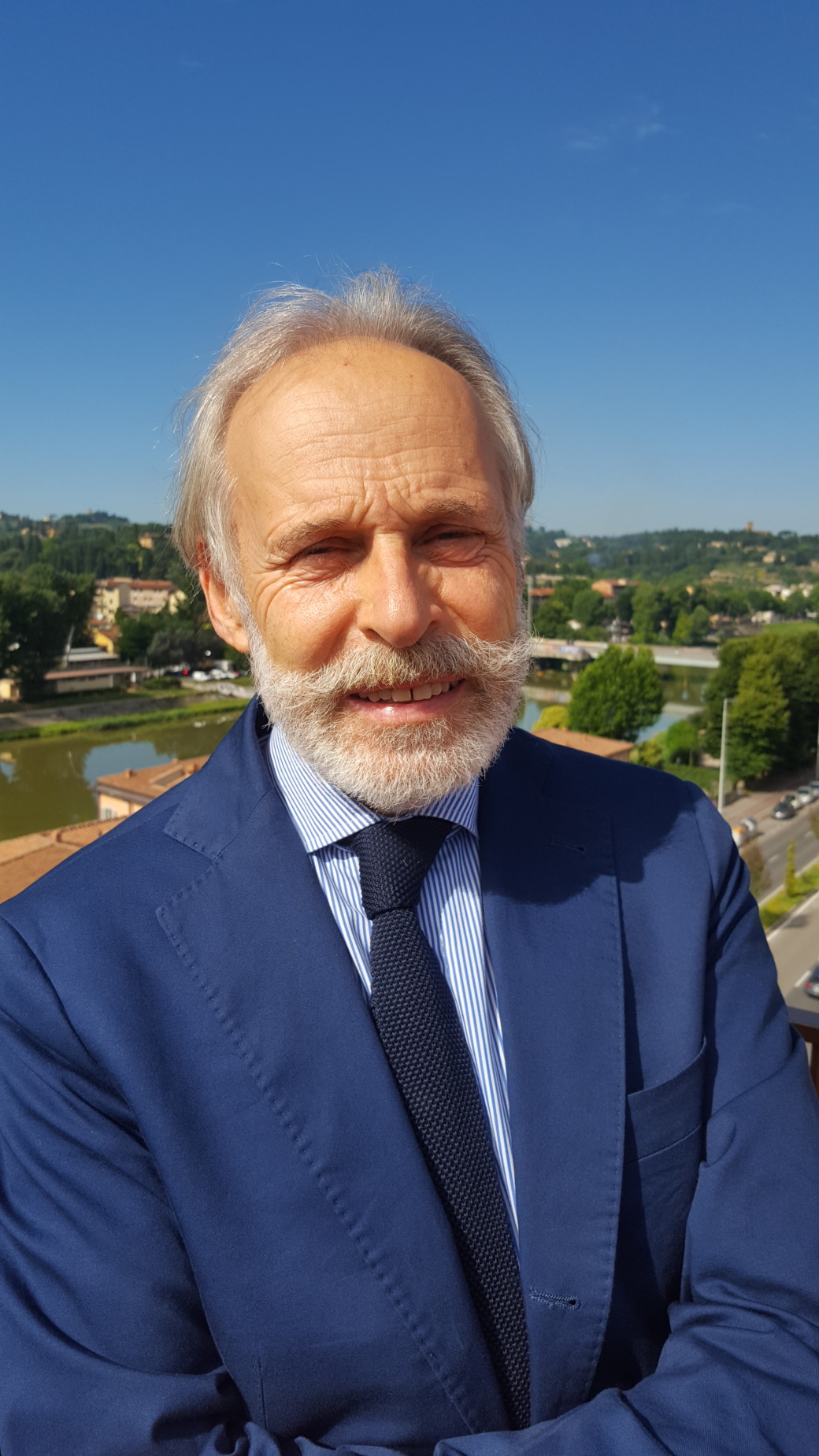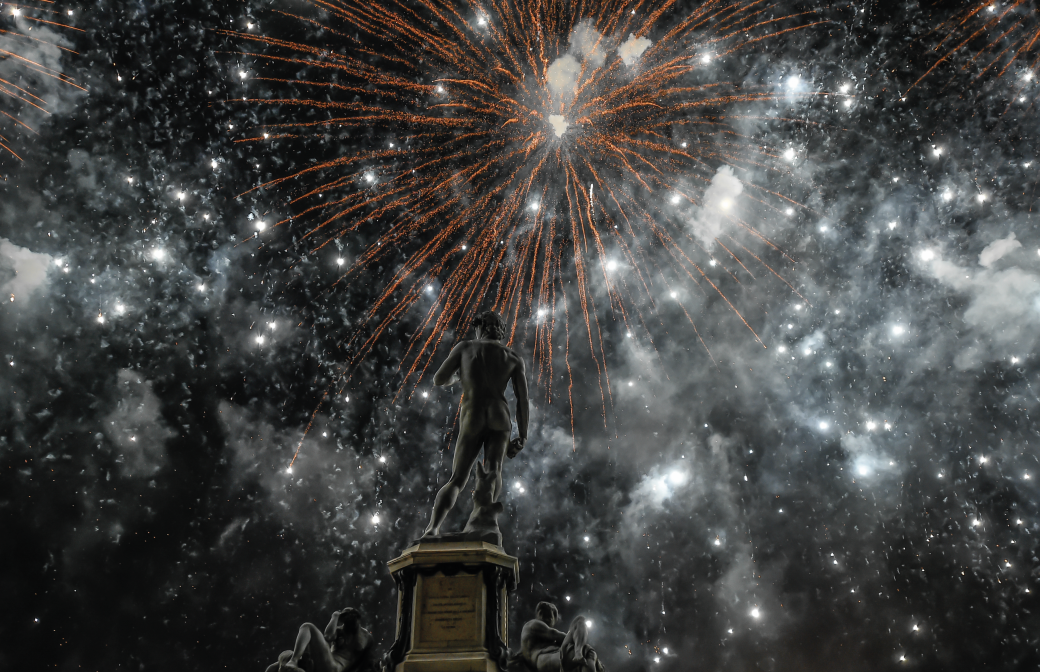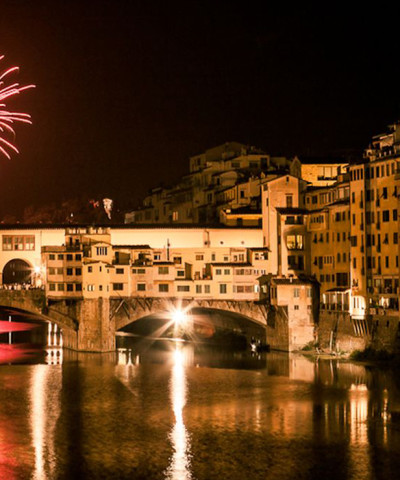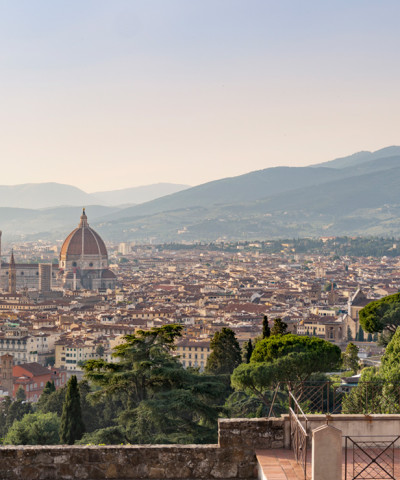Stories and curiosities about the incredible spectacle of the fochi di San Giovanni
Our interview with Claudio Bini, president of the Society of St John the Baptist
The tradition of the ‘Fochi di San Giovanni’, the fireworks display that sparkles in the eyes of all Florentines and tourists in the city on the night of 24th June, has a very long history. It was told to us by Claudio Bini, president of the St. John the Baptist Association, which has been looking after the celebrations of the Florentine patron saint since 1796.
 Claudio Bini, President of the St. John the Baptist Association
Claudio Bini, President of the St. John the Baptist AssociationWhen and how did the tradition of St John’s fireworks start?
The current fireworks tradition derives from the ‘Fochi di Allegrezza’, a Pagan custom that consisted in celebrating the summer solstice on the eve of St. John’s Day by lighting bonfires in Piazza Duomo, above the gates of the city walls and in Piazza della Signoria. From the 13th century, with the discovery of gunpowder, bonfires were replaced by artificial, mostly white fireworks. The first major progress came in the early 1800s with the addition of colours (red, blue and green), they became more majestic and burned easier.
How has it changed over the centuries?
In the beginning, these were ‘rockets’ that left from Porta alla Croce or Canto alle Rondini. It was with the return of the Medici, and in particular with Cosimo I (the first Grand Duke), that a big festival began to be celebrated in the name of the patron saint with the use of large structures full of fireworks known as pinwheels; they were true works of engineering. In the past, the fireworks were set off in Piazza della Signoria, but since 1923, for safety and visibility reasons, they were moved to Piazzale Michelangelo, where they are still set off today.
What time does the show start?
The musical entertainment begins at 9pm on the Lungarno della Zecca, which is this year held by the Air Force band celebrating its 100th anniversary, while the first bang goes off at 10pm, with the street lights on the Lungarno della Zecca and in the Oltrarno, from the Torre di San Niccolò up the ramps to the square, being switched off to make the show all the more magical.
 Fuochi di San Giovanni (ph. Mauro Sani)
Fuochi di San Giovanni (ph. Mauro Sani)How long do the fireworks last?
About 40 minutes and most of them are aerial fireworks, which increase in speed and size as the minutes go by. The show requires a lot of behind the scenes work. It is managed by the St. John the Baptist Association with the collaboration of the City of Florence and the Fondazione CR Firenze and it also involves setting up chairs on the Lungarno della Zecca to watch the show and adopting the relevant safety and prevention plans.
Where are the best places to watch the show?
The best place is with friends and relatives on one of their terraces; otherwise, there is certainly excellent visibility from the banks of the Arno.
The fireworks are not the only tradition where Florence celebrates its patron saint. What and when are the other events?
On the morning of 24th June, the St. John’s mission leaves its headquarters in Via Portinari in a procession and marches through the streets of the city centre to Palazzo Vecchio to present the St. John’s Cross to the mayor; it is specially made each year by a well-known Florentine craftsman. Afterwards, the procession reaches the baptistery to present the candles to the Archbishop, and then moves into the cathedral for a mass. In the afternoon, the Palio Remiero di San Giovanni in Arno rowing regatta is held, where the agile four-man paddles of the Società Canottieri Firenze revive the ancient race on the water. Then there is the coronation of the Marzocco, the lion of Florence, which takes place on the morning of the Sunday before 24th June, while the Sunday after the 24th there is the ritual of removing the crown.
The St. John the Baptist Association is also involved in preserving other Florentine and Tuscan traditions and promoting cultural, artistic and sporting events. What are some examples of this?
Among the most significant is the procession with the banners that on 30th November, Tuscan Day, commemorates the penal reform enacted in 1786 by Peter Leopold of Lorraine, the Grand Duke of Tuscany. We then have Florentine Week with cultural initiatives, gatherings and debates, and on 29th January, on the anniversary of its founding, St. John awards the Il Bel San Giovanni Prize to personalities or institutions ‘who have achieved fame and unanimous appreciation’.










